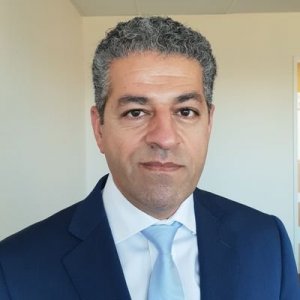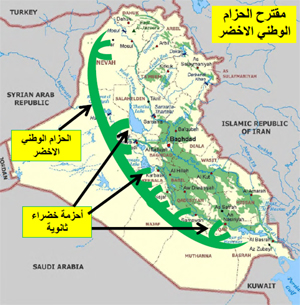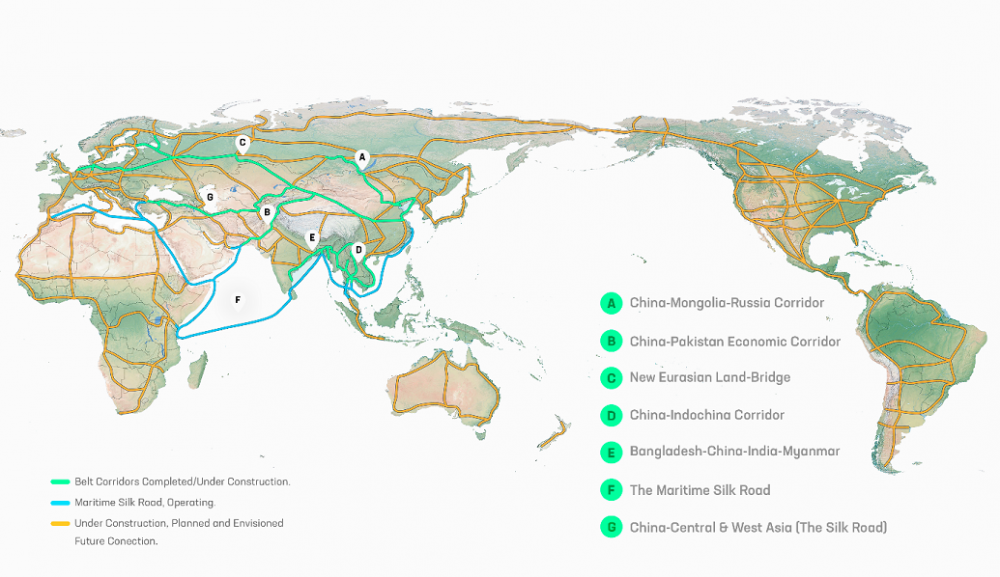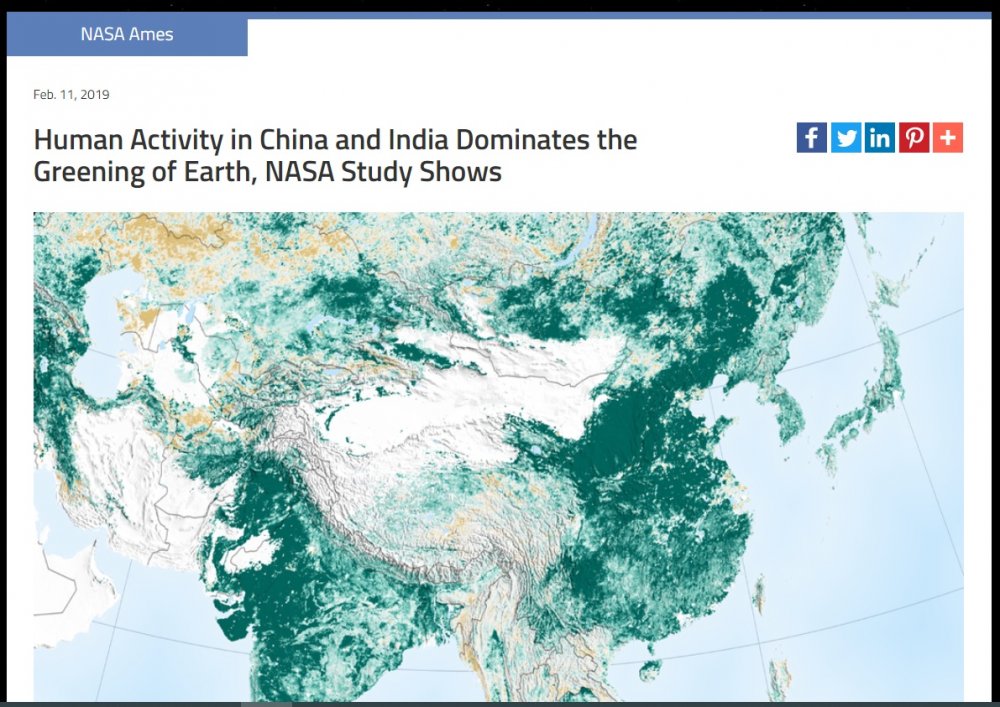
 Saving the Planet” is an expression that is often used to refer to saving the planet Earth from disasters that are "man-made”, such as oil spills, over-exploitation of forests, or most recently causing "climate change”, that is "man-made climate change” due to human activities resulting in emissions of carbon dioxide.
Saving the Planet” is an expression that is often used to refer to saving the planet Earth from disasters that are "man-made”, such as oil spills, over-exploitation of forests, or most recently causing "climate change”, that is "man-made climate change” due to human activities resulting in emissions of carbon dioxide.
Hussein Askary, Southwest Asia Coordinator of the schiller Institute
(CEO of Swedhydro AB [email protected])
"Saving the Planet” is an expression that is often used to refer to saving the planet Earth from disasters that are "man-made”, such as oil spills, over-exploitation of forests, or most recently causing "climate change”, that is "man-made climate change” due to human activities resulting in emissions of carbon dioxide.
At the same time, those appealing to nations and their leaders to "save the planet” (from human activities), are appealing to man. This sounds paradoxical. It is important to note that climate change has been ongoing for hundreds of millions of years, therefore, a historical perspective and a universal perspective are necessary to take into consideration when studying the matter. A "historical perspective” deals with the cycles of change in the temperatures on Earth over millions, hundreds of thousands, and thousands of years. The latest such phenomena were the end of the hundred-thousand-year long ice age which receded 20,000 years ago and the mini-ice age of the 15th and 16th centuries. A "universal perspective” means that we take into consideration extra-terrestrial effects on our climate on Earth such as cycles of solar activity and cosmic radiation that affect cloud formation, for example.
Having these two perspectives does not mean that we can stop these effects but learn how to live and deal with them.
In the noble initiative launched by Mr. Edward Lozansky, it seems that the challenge is to save the planet with man, not from man. Humankind, for better or worse, is placed on top of the chain of existence, as defined by the great Russian-Ukrainian biogeochemist Vladimir Ivanovich Vernadsky (1863-1945). According to Vernadsky, existence as we have known it so far can be divided into three strata: 1. The Lithosphere, i.e. non-living matter that makes most of the planet’s crust. 2. The biosphere, i.e. living matter (life), that has actively transformed the shape of the Lithosphere both on the surface and deep down the crust of earth, and also the atmosphere, by generating oxygen, for example. 3. The Noosphere (sphere of human cognition), which has and can potentially transform both the non-living and living spheres to create a harmonic one through human creativity. In the view of American Physical Economist Lyndon LaRouche, this is the definition of "economy”, which is the increasing of humankind’s power in the universe through the use of creative discoveries translated into technological progress. Humans in this LaRouche-Vernadsky model become a "geological” and transformative force. But this power can bee used for greening the deserts or destroying large swaths of forests. Therefore, moral and rational standards have to be applied here through political and cultural discourse among nations.
To prove this point, I would like to reference a thorough study conducted by NASA’s
The Belt and Road Initiative as a model of cooperation:
The Belt and Road Initiative (BRI), which was launched by the Chinese President Xi Jinping in 2013, aims at connecting Eurasia and Africa (and the Americas in the future) with transport, energy and digital corridors to increase the potential of economic development and trade among nations and regions. So far, 136 nations and 30 international organizations have signed memoranda of understanding with China to become part of the initiative. This win-win initiative has become very attractive to developing nations, as it brings tolls of economic development without political strings attached to it. The governance principle is peaceful economic cooperation and trade among completely independent and sovereign nations.
Studying the BRI and it vision and philosophy could provide a better global governance and cooperation model than the much disputed Paris Climate Accord, which only focuses on negative aspects of economic activities.
Economic Development makes the planet greener
One fascinating aspect of human activity which is positive is a through 20-year NASA study which discovered in 2019 that our planet has become greener: "Over the last two decades, the Earth has seen an increase in foliage around the planet, measured in average leaf area per year on plants and trees. Data from NASA satellites shows that China and India are leading the increase in greening on land. The effect stems mainly from ambitious tree planting programs in China and intensive agriculture in both countries.” [https://www.nasa.gov/feature/ames/human-activity-in-china-and-india-dominates-the-greening-of-earth-nasa-study-shows]
China and India have witnessed incredible economic development and industrialization in the past two decades and it is this factor which is key to their ability to achieve such a massive feat.
Water is not a limited resource!
In this sense, humans have not been bounded by "limited resources”. The Noosphere has even "created” new resources that never existed in nature, such as Bronze or Aluminum as we know it today, although their basic components have existed in abundance in the crust of the planet.
Water, which is the subject of our discussion in the webinar initiated by Mr. Lozansky on November 19, is not a limited resource and it is inexhaustible. We cannot consume water. It goes into a cycle through the plants, through our bodies, through the atmosphere and back to earth and the oceans. However, it does not always exist in forms and qualities that all forms of life, including the human, can benefit from it.
Therefore, the definition of "scarcity” of water, which often comes up in international fora, needs to be qualified.
Yes, there is scarcity, but it is regional, not global. There are two types of scarcity:
1. Physical scarcity: Physical scarcity is the lack of water from natural resources, like shortage of precipitation in dry and areas, lack of access to rivers due to natural barriers.
2. Economic scarcity: Economic scarcity is caused by the lack of water management infrastructure in areas with abundant naturally occurring water resources. In the tropical regions of Africa for example, there is abundant water, but it is mostly undrinkable and in many cases even dangerous for humans due to viral and bacterial contamination and flourishing of parasites. Food production is poor in these regions due to the lack of irrigation systems and other necessary infrastructure and machinery.
In this sense, human intervention plays a key role in "fixing” what nature itself is incapable of doing, i.e. causing and supporting both cognitive (noetic) existence and living matter to flourish and be sustained in more regions of the planet. We can help the principle of life to find new footholds on the planet, and maybe in the solar system. Our closest challenge is the deserts, arid and semi-arid areas that poorly equipped to support life.
Bringing water to these regions is the number one challenge. The brilliant speakers brough up several unique solutions to the discussion.
These solutions are, as far as I remember, are:
- Water transfer from regions with abundant water to dry regions through canals.
- Seawater desalination, using methods of reverse osmosis by pressurizing seawater through membranes and the use of waste heat from power generations plants (including nuclear power plants) for thermal vapor compression. Both techniques require large amounts of power.
- Atmospheric water capture (using condensations machines).
- Enhancing rainfall through ionization of the atmosphere. (I advise to contact Dr. Sergey Pulinets, Principal Scientific Researcher at Space Research Institute, Russian Academy of Sciences, as he is one of the best known experts on this technology).
- Exploring groundwater in desert areas, using modern technologies including space technology, and prudently using that water to support local communities. (I did not have the time to discuss this in the webinar, but my friend French geologist Alain Gachet is to be recommended as a pioneer of this technology: https://www.rtiexploration.com/ ).
Bringing life back to a desert, or to another planet, is the ultimate achievement of Vernadsky’s cognitive man.
The Iraqi Green Belt
NB! One of the projects my own company Swedhydro has been lobbying for internationally is the Iraqi Green Belt. It consists of creating a green shield by planting rows of different types of heat-resisting fruitful trees like date palms and olive tree, in addition to evergreens west of the Euphrates river in Iraq, in what is designated as an arid area. The goal is to protect the major Iraqi cities from sand and dust storms, in addition to creating new agricultural and settlement possibilities for the country, using modern irrigation techniques like drip irrigation, to produce more food for the import-dependent country.






_jpg/250px-ElbeDay1945_(NARA_ww2-121).jpg)





